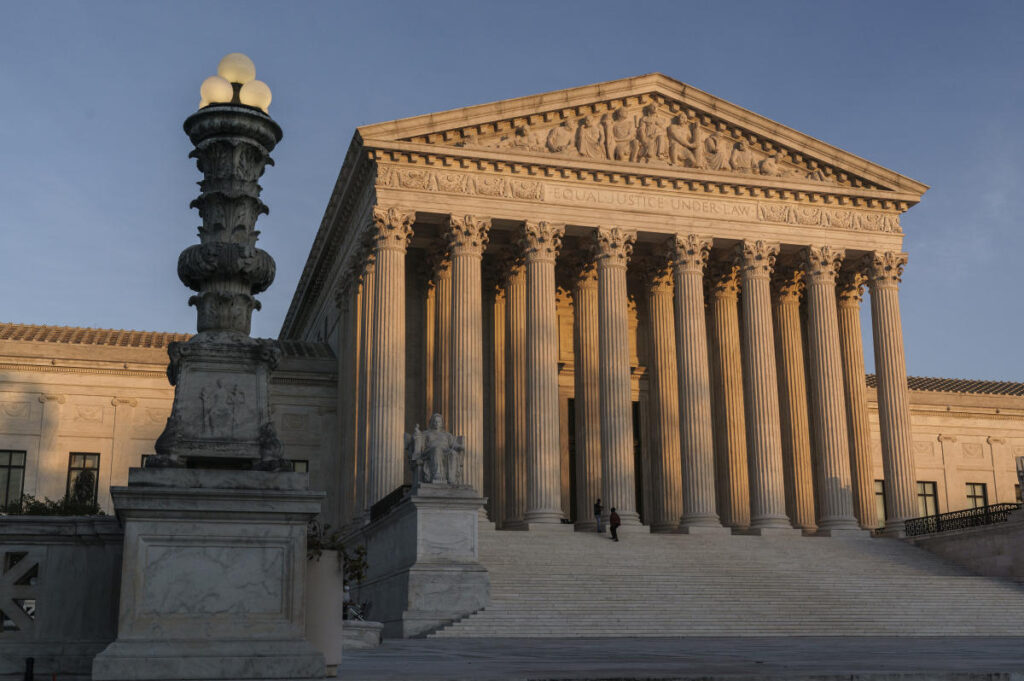Donald Trump has appointed three Supreme Court justices during his presidency, and should he secure a second term, he may have the opportunity to appoint two more. This potential scenario could lead to a Supreme Court with a Trump-appointed majority, allowing his judicial influence to extend for decades. The composition of the court is especially significant as it could avoid involvement in election disputes while shifting the focus of future cases, particularly those concerning abortion and immigration. The two oldest justices, Clarence Thomas and Samuel Alito, are considered potential retirees who may step down, enabling Trump to nominate justices who might ensure conservative rulings for years to come, preserving their judicial philosophy far into the future.
Thomas and Alito, being 76 and 74 years old respectively, might prefer delaying their retirements to prevent any immediate disruption within the court. Historical precedence shows that justices tend to retire staggered over a year apart to maintain judicial stability. Speculation abounds regarding Thomas’s retirement, especially given the importance of leaving a like-minded successor. A conservative legal scholar has pointed out that Thomas, if he were to remain until his 80th birthday, could become the longest-serving justice in history, but risks the legacy of Ruth Bader Ginsburg, who passed away shortly before the 2020 presidential election. Ginsburg’s refusal to retire when she had the chance led to a swift replacement by Trump, which significantly reshaped the court’s balance towards conservatism.
The current Supreme Court, now majority conservative due to Trump’s appointments of Justices Neil Gorsuch, Brett Kavanaugh, and Amy Coney Barrett, has already made substantial impacts on pivotal issues. They played a direct role in overturning Roe v. Wade, thereby dismantling the federal right to abortion and marking a profound shift in reproductive rights. The court, along with Chief Justice John Roberts, has extended gun rights, curtailed affirmative action in college admissions, and limited the federal government’s ability to address climate change. This conservative push signals a transformative period in American law, aligning judicial outcomes more closely with conservative ideologies.
Despite having overturned Roe v. Wade, the court’s involvement with abortion rights continues, with current cases addressing emergency abortions within states that impose bans. Under the new administration, it seems likely that previously established guidelines which mandated that doctors provide essential emergency abortions—even in states where abortion is outlawed—will be rescinded. Furthermore, the contentious issue surrounding access to the abortion medication mifepristone has reemerged, inviting challenges in the lower courts which could reshape the medication’s accessibility even after previous Supreme Court decisions secured it.
In the realm of immigration, the Deferred Action for Childhood Arrivals (DACA) program remains a focal point of legal battle. While Trump sought to dismantle DACA during his presidency, the Supreme Court intervened, preserving it. However, the current conservative majority, particularly with the influence of Trump-appointed justices, may lead to a different outcome if the matter resurfaces in the high court. This ongoing conflict underscores the complexities of immigration policy in the U.S. and illustrates how the ideological leanings of the court can sway administrative policies related to immigration.
Trump’s prior administration sparked pivotal legal controversies, including the attempt to impose a travel ban on certain Muslim-majority nations—a measure that faced significant legal challenges but was ultimately approved by the Supreme Court. As Trump campaigns for a second term, he indicates intentions to reignite the travel ban, reflecting a continuous focus on immigration that aligns with his administration’s original framework. The evolving landscape of the Supreme Court under a potential second Trump term will undoubtedly impact significant legal issues for years, establishing a long-lasting conservative influence in American jurisprudence that may reshape societal norms and policies.

